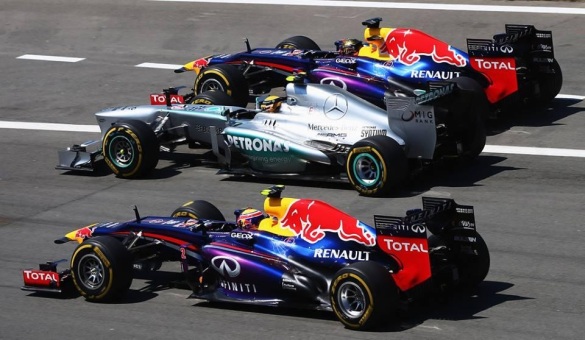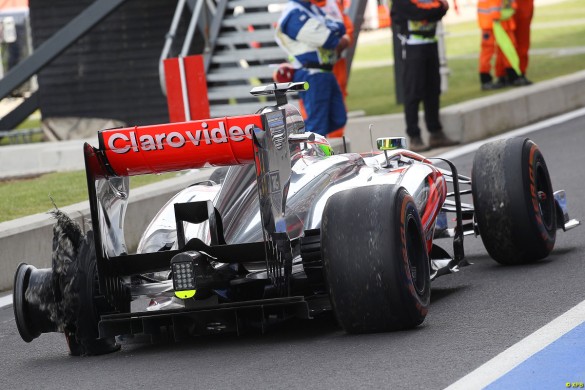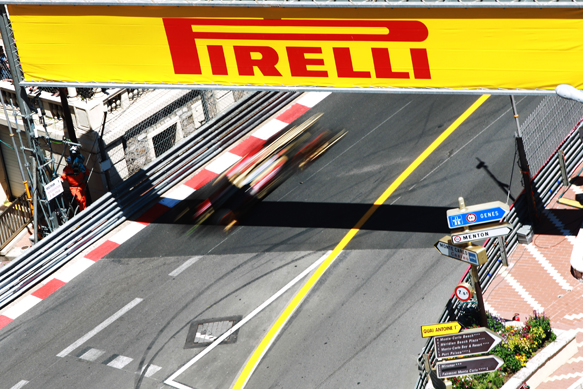What a race that was!
While we all may be reeling in anger over the stewarding over the move Romain Grosjean made over Massa (I sure am), we cannot shy away from the fact that Mercedes has scored its first genuine win this season.
Monaco is Monaco, and one could argue they were still benefitting from their test data, and Silverstone was gifted to them due to Vettel’s bad luck. All eyes were on the team to win a race all on their own, on a real track. They just weren’t on them this weekend.
Mercedes and Lewis Hamilton really confounded all expectations this weekend. All the possible variables were working against them: high temperatures, rear-limited track and they missed the Young Drivers’ Test. The fact that Mercedes dominated this race is a testament to the depth of the talent not just in their drivers, but throughout their whole team, from the technical directors and mechanics.
The Hungarian Grand Prix was also a major morale boost for Lewis Hamilton. After having to live with racing in the shadow of teammate, Nico Rosberg, Lewis was finally able to capitalize on the immense one-lap pace of his Mercedes and convert his fourth pole of the season into a win. This comes at just the right time, as well.
Since fleeing the safe and comfortable nest of Mclaren, Lewis has had to live and cope with the pressure of a new environment. Even he will admit that he still is not 100 percent comfortable in Mercedes or the car quite yet. Given all this, Lewis has proven he deserves the highest of praise. He has shown us all that he needs neither a track where overtaking is nonexistent nor the misfortune of others to win a race (not to take anything away from Nico’s wins, though). He can do it all by himself, and convincingly so, through sheer will, desire and talent.
But this race only leaves me more confused about the Silver Arrows and the brains behind the operation in Brackley. I said after the British Grand Prix that Mercedes was firmly in the title hunt. After Germany, I had to eat my words a little bit, but I analyzed their individual races and categorized them into three types: type A, B, and C, with A being a terrible race and C being a win. Today, Lewis won with contemptuous ease.
Mercedes said they needed a miracle to win in Hungary. They can thank Lotus and the stewards for that.
Lotus can only leave Hungary with a bitter taste of disappointment. After losing a shot at the win to an extremely harsh penalty, the team had to once again rely on an alternate strategy to take home a trophy. Hungary was the first real chance for Lotus to take a clear cut win on a conventional strategy. It was their chance to prove that their car is not just good at conserving its tires, but that it is quick enough to take the fight to Red Bull on any day.
I go into the summer break with some concerns, however. A host of possibilities are just waiting to alter the course of Lotus’s future, particularly the fate of Kimi Raikkonen’s 2014 drive. Whether the Finn chooses to move to Red Bull or not remains to be seen, and Red Bull must also decide whether they want to risk having two superstars in their team at the same time. If Kimi ends up at Red Bull, Lotus is put at a disadvantage. Eric Boullier and his team will have to decide whether to keep the fast but inconsistent Romain Grosjean and replace Kimi, or start from scratch. Both scenarios have strong cases to be made. Has Grosjean done enough at this point to be retained for another season? Perhaps not. Can he do enough in the rest of the season to convince the team to keep him? Absolutely. And I think he will.
Romain was going to be the star of the Hungarian Grand Prix, and arguably was, considering what happened to him. He pulled off the overtake of the day, and perhaps of the season so far, when he passed Felipe Massa on the outside of turn 4. I call complete and total nonsense on the Frenchman’s subsequent drive-through, particularly considering he was the only one punished for a move that was made by more than one person.
The penalty, though, brings me back to this question, the one I posed in the title of this blog: Will Lotus ever win a race again? At least this season, we don’t really know. We head into the summer break knowing that a brilliant and deserved win was lost due to inconsistent and overly-harsh stewarding. We, and Lotus, also know all too well that after the summer break in 2012, Lotus found themselves in a performance valley when others (Mclaren and Red Bull) found the peaks. It was only until Abu Dhabi that Lotus finally found themselves back on the podium. The rest of the second half of last season was mostly a case if so close yet so far.
This is something that will be weighing heavily on the conscience of all the members of the Lotus F1 Team. After the mandatory factory shutdown in August, the guys and girls back at Enstone need to work harder than they ever have before to ensure that Kimi can stay in contention for the Drivers’ Championship, and stay alive in the Constructors’ for as long as they can, regardless of how unlikely it is they should take the crown. That means making sure that updates come at every race, that means making sure said updates work as expected, and it also means making sure both of their drivers can win races without relying on alternate tire strategies. That advantage can only last so long.
Arguably the most important thing for Lotus to work on, though, is morale. If the valleys can feel like peaks, then any shortfalls in performance they may encounter won’t be so painful.
Yesterday, though, it seems Romain Grosjean was a victim of his own reputation. That ballsy move on Felipe Massa was a testament to the talent the young man has, but the resulting penalty was a testament to his track record. On lap 24, Sebastian Vettel pulled off an identical move on Jenson Button, getting his car just as far off the track as Grosjean did, yet he went un-punished. The 20 second time penalty employed AFTER the race for a different clash was perhaps even more infuriating. The stewards would have known that Romain was more than 20 seconds ahead of Jenson Button, the aggrieved party after the two’s little clash at the turn 6/7 chicane, and thus would have know without a question or shadow of doubt that adding 20 seconds to Romain’s race time would have done diddly squat. There is no arguing with that. Now, I’m not going to argue with their ruling, as it leaves the innocent Romain licking, rather than tending, to his post-race wounds, but I will point out what the stewards should have done had they wanted to perhaps, oh I don’t know, DO THEIR JOB. A simple grid penalty. Five places for Belgium would have done the job. It would have left the results of this race untainted and reminded Romain that he needs to be more careful for the next race. It is a simple solution on the stewards’ part that they failed to implement.
The inconsistency on the Stewards’ part, who should know better, is becoming a joke and is resulting in the ruination of race results. Could Lewis have won without Romain’s penalty? Of course. Would he?
I don’t think so…
That’s it for the first half of the 2013 season. I’ll be in and out throughout the break with some features on all things F1 2014. Interviews, analysis and some highly opinionated banter are on the menu.


